✓ Joining us on our Whatsapp Channel: 💬 Explore and Escape!.
Booking through us:
✓ 🏩 🛌 Handpicked Luxury Stays in Budget: Booking.com | Agoda.com
✓ 🍹⛱️ Deals on Private xfers, SIM Cards, City tours, Day trips : 📍🗺️ GetYourGuide | 🛵🧳 Klook
com/landmarks/oceania-landmarks/landmarks-of-australia/”>landmarks in Europe, you’d know there are quite a few of them are here in Japan.
Japan is a stunning and richly diverse country that boasts a plethora of awe-inspiring landmarks, each imbued with its own unique cultural significance, and shrouded in centuries-old mythology and legend.
From the iconic cherry blossom trees that bloom every spring, to the towering Mount Fuji that dominates the skyline, Japan’s landmarks offer a window into its vibrant history, traditions, and natural wonders.
Let’s embark upon a cultural and visual journey that showcases some of the most impressive landmarks in Japan.
1. Mount Fuji
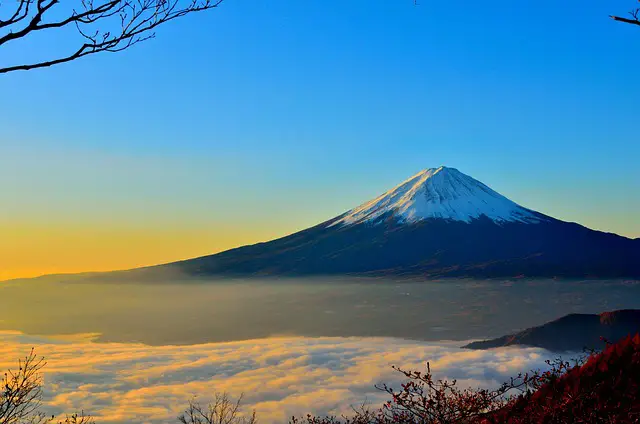
Mount Fuji is the highest mountain in Japan at 3,776 meters and is located on Honshu Island.
What to see or do: Hiking to the summit of Mount Fuji is a popular activity during the climbing season from early-July to mid-September.
However, visitors can also enjoy the natural beauty of the surrounding area by walking the Yoshida Trail, visiting nearby lakes such as Lake Kawaguchiko or taking a cruise on Lake Ashi.
Don’t miss: The breathtaking view of the sunrise from the summit of Mount Fuji is a sight to behold. Additionally, the Fuji Five Lakes area is also a must-see destination with its stunning landscapes and onsen (hot springs).
Insider travel tips: To make the most of your visit, be sure to check the weather forecast in advance and prepare accordingly as the weather can be unpredictable.
It is also recommended to book accommodations in advance as they tend to fill up quickly during the climbing season. Finally, be mindful of the altitude and take the necessary precautions to avoid altitude sickness.
2. Tokyo Tower
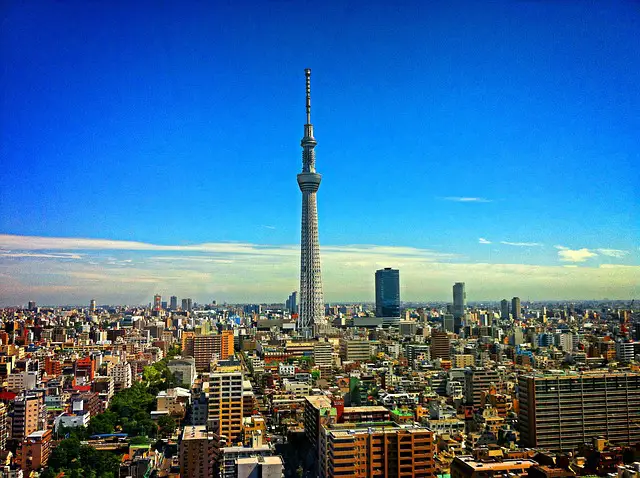
Tokyo Tower is a renowned landmark in the city of Tokyo, Japan. Standing at 333 meters, it is a communications and observation tower that attracts millions of visitors each year.
What to see or do: The main attraction of Tokyo Tower is the observation deck that offers panoramic views of the bustling cityscape.
Visitors can take in the sights from two different viewing platforms, one at 150 meters and the other at 250 meters.
Don’t miss: In addition to the observation decks, Tokyo Tower also features a restaurant, cafes, souvenir shops, and museums. The Guinness World Records Museum and the Wax Museum are two popular attractions within the tower.
Insider travel tips: To avoid long lines, it’s best to purchase tickets online in advance.
Go early in the morning or late in the evening to beat the crowds and enjoy quieter views of the city.
For a unique experience, consider visiting the tower during the illuminations at night when it lights up the Tokyo skyline.
3. Tokyo Skytree
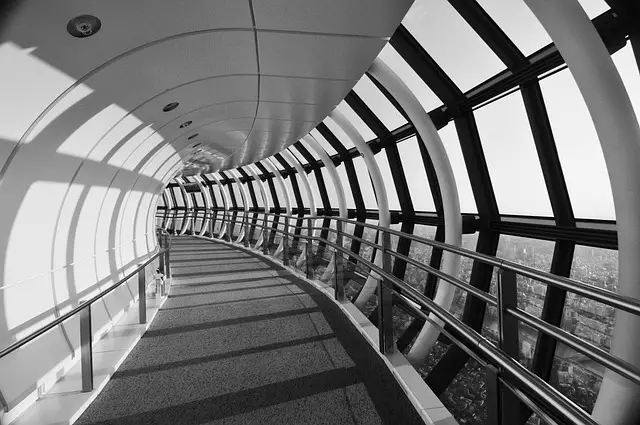
Tokyo Skytree is a broadcasting and observation tower located in Sumida City, Tokyo, Japan. It is the tallest structure in Japan and the second tallest structure in the world.
What to see or do: Visit the observation deck to enjoy panoramic views of Tokyo and beyond.
The deck is located at 350 meters and 450 meters, and there is also a glass floor section where visitors can look straight down to the ground.
At the base of the tower, there is a large shopping complex with numerous restaurants and souvenir shops.
Don’t miss: The view from the observation deck is especially stunning at sunset when the city lights up.
If you are interested in Japanese traditional culture, visit the Tembo Galleria, a section of the observation deck with a slope-shaped floor that leads up to the 445-meter-high peak.
Insider travel tips: To avoid long lines, buy your tickets online in advance or visit early in the morning. If you are planning to visit the observation deck during peak hours, expect to wait up to 1-2 hours.
Also, consider visiting on a clear day for the best views.
4. Meiji Shrine

Meiji Shrine (Meiji Jingu) is a Shinto shrine located in the heart of Tokyo, dedicated to the deified spirits of Emperor Meiji and his consort, Empress Shoken.
What to see or do: Take a peaceful stroll through the forested grounds and enjoy the serene atmosphere of this spiritual oasis in the middle of bustling Tokyo.
Admire the impressive torii gate and the huge wooden shrine buildings surrounded by greenery. Witness traditional Shinto ceremonies and events, such as weddings and archery competitions, at the shrine.
Don’t miss: The Treasure Museum next to the shrine, which houses an impressive collection of artifacts related to Emperor Meiji and Empress Shoken, including their personal possessions and gifts given by other nations.
Insider travel tips: – Meiji Shrine can get very crowded, especially on weekends and holidays, so plan to visit early in the morning or late in the afternoon to avoid the crowds.
5. Sagrada Familia Temple
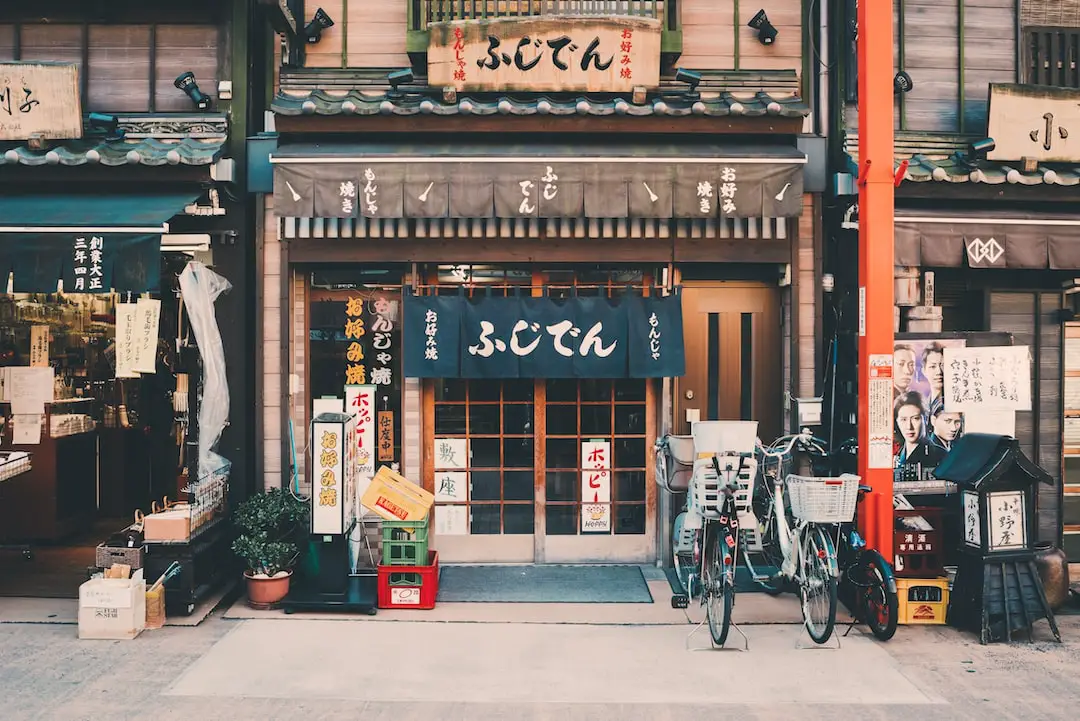
A world-famous Roman Catholic Church located in Barcelona, Spain.
What to see or do: Marvel at the stunning architecture and intricate details of the temple’s facade and interior. Admire the stained glass windows and take in the breathtaking views from the towers.
Don’t miss: The Nativity Façade, which depicts the birth of Jesus and is filled with intricate sculptures and details. Also, make sure to see the Passion Façade, which portrays the crucifixion of Jesus.
Insider travel tips: Book your tickets ahead of time to avoid long lines. Consider taking a guided tour to learn more about the history and symbolism of the temple.
And if you’re visiting in the summer, be prepared for crowds and heat – bring water and wear comfortable clothing.
6. Himeji Castle

A UNESCO World Heritage Site in Japan, often considered one of the country’s finest surviving examples of traditional Japanese castle architecture.
What to see or do: Visitors can explore the castle’s beautifully-preserved interiors, climb to the top of the main tower for panoramic views of the surrounding area, and wander the sprawling castle grounds.
Don’t miss: The stunning white facade of the castle, which gleams brilliantly in the sunlight, earning it the nickname “The White Heron Castle.
Insider travel tips: Try to visit in late April or early May, when the surrounding gardens are in full bloom with cherry blossoms. Go early in the day to avoid crowds, and wear comfortable shoes since there are many stairs to climb.
7. Hiroshima Peace Memorial Park
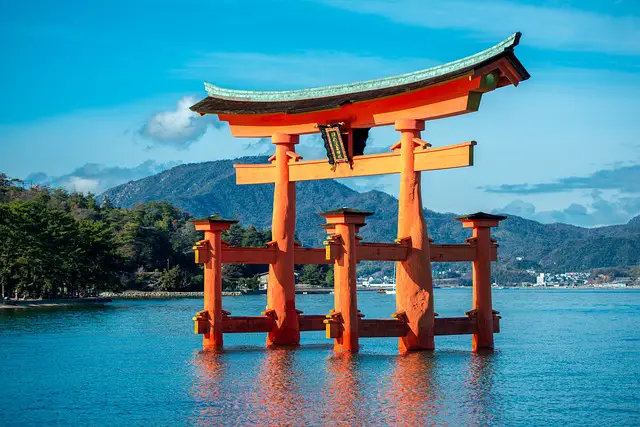
A park in the center of Hiroshima, Japan that serves as a memorial to those who died in the atomic bombing of the city during World War II.
What to see or do: Visit the Peace Memorial Museum, which tells the story of the bombing and its aftermath through exhibits and artifacts.
Walk through the park to see the various memorials and monuments, including the cenotaph, the Flame of Peace, and the Children’s Peace Monument.
Don’t miss: The A-Bomb Dome, a skeletal building that was one of the few structures to remain standing near the hypocenter of the explosion.
Insider travel tips: – Plan to spend at least a few hours in the park to fully appreciate its significance.
8. Fushimi Inari-taisha Shrine
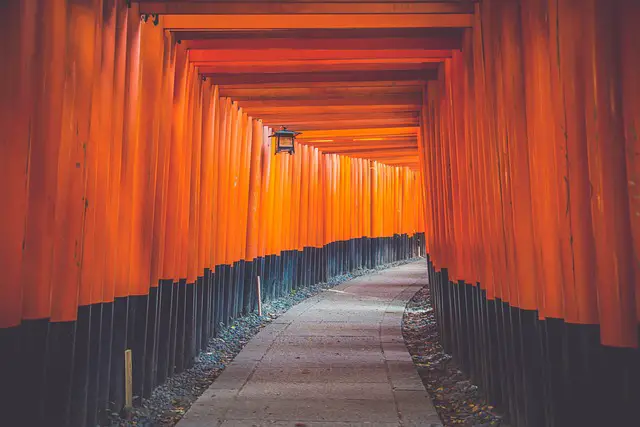
Fushimi Inari-taisha Shrine is a Shinto shrine located in Kyoto, Japan.
What to see or do: The shrine is famous for its thousands of vermilion torii gates that line the hiking trails through the forest of Mount Inari, creating a stunning and surreal atmosphere.
Visitors can hike through the trails, admire the torii gates, and visit the inner shrine buildings.
Don’t miss: The most popular and photographed section of the trail is the Senbon Torii (thousands of torii gates), which marks the entrance to the inner shrine, and offers breathtaking views of Kyoto city.
Insider travel tips: The hiking trails can be quite steep and strenuous, so visitors should wear comfortable shoes and bring water and snacks. To avoid the crowds, it is best to visit early in the morning or late in the afternoon.
The shrine is also especially beautiful during autumn when the leaves change color.
9. Golden Pavilion Temple
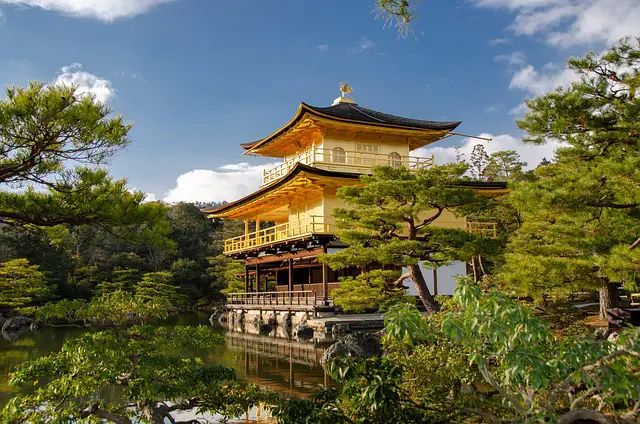
The Golden Pavilion Temple, also known as Kinkaku-ji, is a Zen Buddhist temple located in Kyoto, Japan.
What to see or do: Visitors can stroll through the temple’s beautiful gardens and enjoy the stunning views of the Golden Pavilion, which is covered in gold leaf and set against a backdrop of trees and water.
Inside the temple, you can see the original relics of Buddha and other historic artifacts.
Don’t miss: Make sure to take in the temple’s beautiful reflections in the surrounding pond, particularly during autumn when the leaves change color.
Also, don’t forget to check out the carefully crafted tea garden, which offers visitors a traditional Japanese tea ceremony.
Insider travel tips: – Arrive early to avoid crowds and make sure to wear comfortable shoes for walking around the temple’s gardens.
10. Osaka Castle
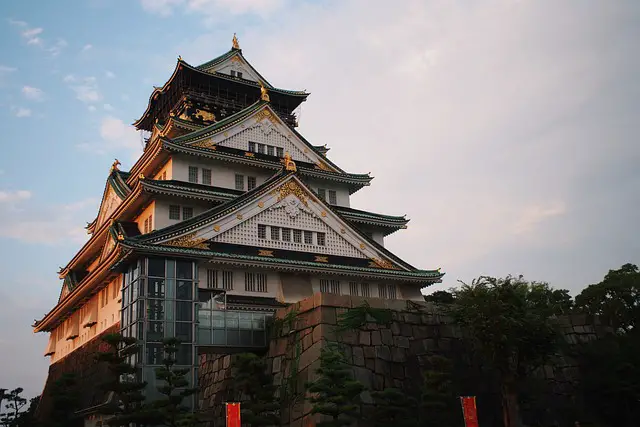
Osaka Castle is a popular tourist attraction located in the heart of Osaka, Japan. It is a historic castle that dates back to the 16th century.
What to see or do: Visitors can explore the castle grounds and take part in guided tours to learn about the castle’s rich history. The castle also houses a museum with exhibits showcasing the history and culture of the Osaka region.
Don’t miss: Don’t miss the opportunity to view the impressive castle exterior, which features five levels and a beautiful moat. The castle grounds also offer stunning views of the surrounding city.
Insider travel tips: Avoid visiting during peak tourist season to avoid crowds. It’s also recommended to visit in the morning to avoid the heat of the day.
Be sure to wear comfortable shoes, as the castle grounds involve a lot of walking. Additionally, consider bringing cash as some areas in the castle grounds only accept cash payment.
11. Todaiji Temple

Todaiji Temple is a famous Buddhist temple located in Nara, Japan. It was built during the 8th century and is known for its massive bronze Buddha statue.
What to see or do: Explore the temple grounds and admire the intricate architecture of the temple. Stand in awe in front of the giant bronze Buddha statue, the tallest of its kind in Japan.
Don’t miss the beautiful cherry blossom trees during springtime.
Don’t miss: Make sure not to miss the opportunity to take a closer look at the massive Buddha statue. You can also feed the friendly deer that roam the temple grounds.
Insider travel tips: Beat the crowds and visit early in the morning. Make sure to wear comfortable shoes as there’s a lot of walking involved.
Don’t forget to try the local specialty, “kakinoha-zushi” (sushi wrapped in persimmon leaves), at the nearby shops.
12. Kiyomizudera Temple
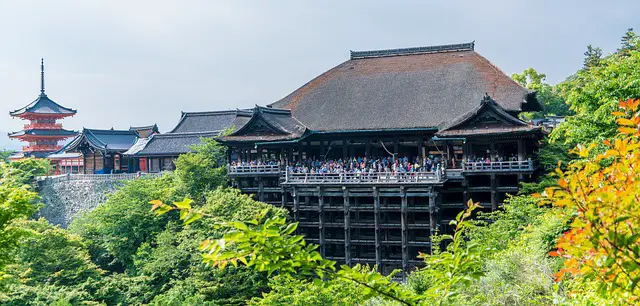
Kiyomizudera Temple is a historic Buddhist temple located in Kyoto, Japan, and is one of the most celebrated temples in the country.
What to see or do: The temple’s main attraction is its impressive wooden stage, which offers stunning views of the city and the surrounding natural beauty.
Visitors can also explore the temple’s various halls and structures, as well as its beautiful gardens and ponds.
Don’t miss: Don’t miss the opportunity to drink from the temple’s Otowa waterfall, which is said to offer health, longevity, and success to those who partake.
The temple’s Jishu Shrine, which is dedicated to love and matchmaking, is also a must-visit attraction.
Insider travel tips: – Visit early in the morning to beat the crowds and enjoy a more peaceful experience.
13. Tsukiji Fish Market

Tsukiji Fish Market is an iconic fish market in Tokyo, Japan that has been in operation for over 80 years.
What to see or do: Visitors can observe the daily tuna auctions at the inner market (restricted to 120 visitors per day), stroll through the outer market filled with vendors selling fresh seafood, produce, and kitchenware, and enjoy sushi and other seafood dishes at the numerous restaurants in the area.
Don’t miss: The sushi breakfast options at the various sushi restaurants are not to be missed, especially the ones located within the market itself.
Insider travel tips: Make sure to arrive early, around 5 a.m.
to witness the tuna auctions, and wear comfortable shoes as there is a lot of walking involved. Keep in mind that the market is closed on Sundays, holidays, and some Wednesdays.
Also, be aware of vendors who may not allow photography in their shops, so ask for permission first.
14. Odaiba
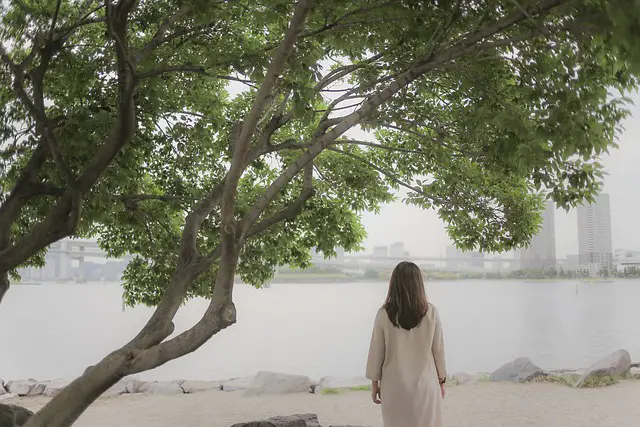
Odaiba is a man-made island in Tokyo Bay known for its futuristic architecture, amusement parks, shopping malls, and entertainment options.
What to see or do: Visit the Gundam Statue – a 19.7-meter-tall robot statue that lights up at night and is a popular photography spot.
Don’t miss: The Oedo Onsen Monogatari – a hot spring theme park that offers a traditional Japanese culture experience with outdoor hot springs, saunas, and other activities.
Insider travel tips: Try out the shopping malls in Odaiba as they offer great shopping options with a variety of brands.
15. Roppongi Hills

Roppongi Hills is a modern high-rise development in the Roppongi district of Tokyo, Japan.
What to see or do: – Visit the Mori Art Museum, which features contemporary art exhibitions.
Don’t miss: – The interactive Tokyo City View exhibit, which highlights Tokyo’s history, culture, and landmarks.
Insider travel tips: – Consider visiting in the evening to experience the vibrant nightlife scene in Roppongi.
16. Tokyo Disneyland
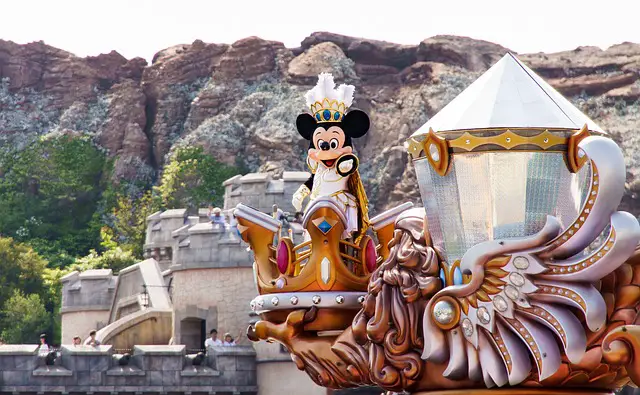
Tokyo Disneyland is a theme park located in Urayasu, Chiba, Japan. It opened in 1983 and is owned by the Oriental Land Company.
What to see or do: Tokyo Disneyland has seven themed lands, including Adventureland, Fantasyland, Tomorrowland, Westernland, Critter Country, Mickey’s Toontown, and the World Bazaar.
Visitors can enjoy a variety of attractions, shows, parades, and themed areas, including classic rides like “It’s a Small World,” “Pirates of the Caribbean,” and “Haunted Mansion.
Don’t miss: One of the most popular attractions in Tokyo Disneyland is the “Pooh’s Hunny Hunt” ride, which features interactive technology and animatronics.
Visitors should also check out the nighttime “Electrical Parade Dreamlights” and seasonal events, including Halloween and Christmas celebrations.
Insider travel tips:
17. Universal Studios Japan
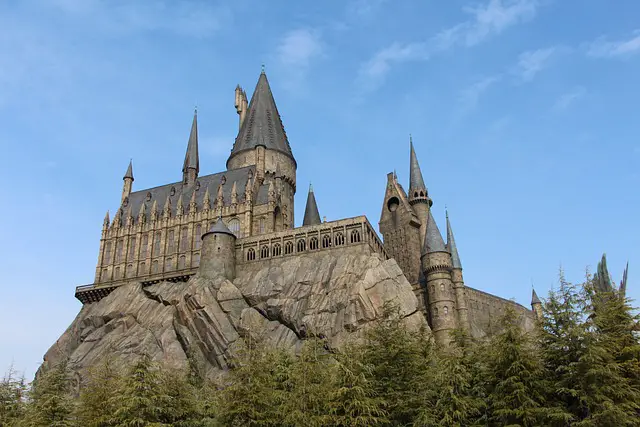
Universal Studios Japan is a theme park located in Osaka, Japan.
What to see or do: – Explore The Wizarding World of Harry Potter, which is complete with Hogwarts Castle, Hogsmeade and various rides and attractions.
Don’t miss: – Harry Potter and the Forbidden Journey ride in The Wizarding World of Harry Potter.
Insider travel tips: – Arrive early and head to The Wizarding World of Harry Potter first, as it gets crowded quickly.
18. Dotonbori
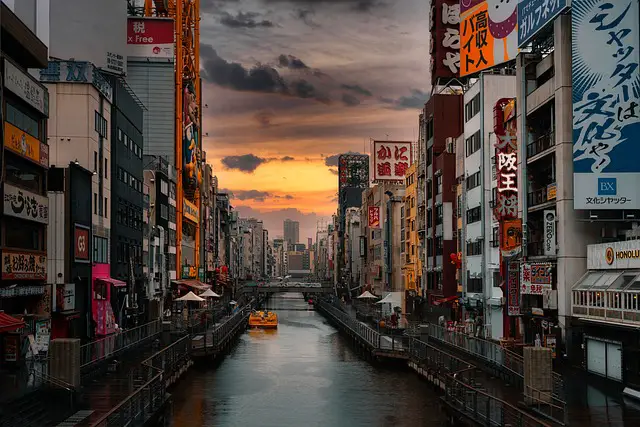
Dotonbori is a lively neighborhood in Osaka, Japan, known for its vibrant street food scene and entertainment district.
What to see or do: – Try the famous local cuisine, including takoyaki (grilled octopus balls) and okonomiyaki (savory pancakes).
Don’t miss: – The massive crab statue in front of the Kani Doraku restaurant, a Dotonbori landmark.
Insider travel tip: – It can get very crowded in the evenings, so consider visiting during the day if you want a more relaxed experience.
19. Nijo Castle
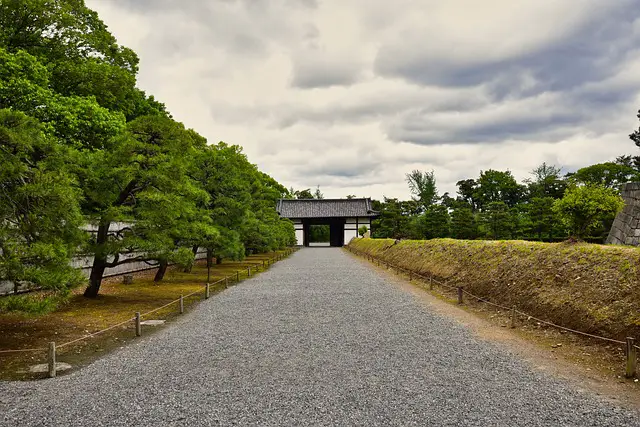
A historic castle located in Kyoto, Japan, built in 1603.
What to see or do: Explore the beautiful traditional Japanese architecture and gardens surrounding the castle. Don’t miss the “nightingale floors” in the Ninomaru Palace, designed to squeak to alert inhabitants of approaching enemies.
Insider travel tips: Visit early in the morning or later in the afternoon to avoid crowds and take advantage of the peaceful atmosphere. Consider renting an audio guide to learn about the history and significance of the castle.
20. Kamakura Great Buddha
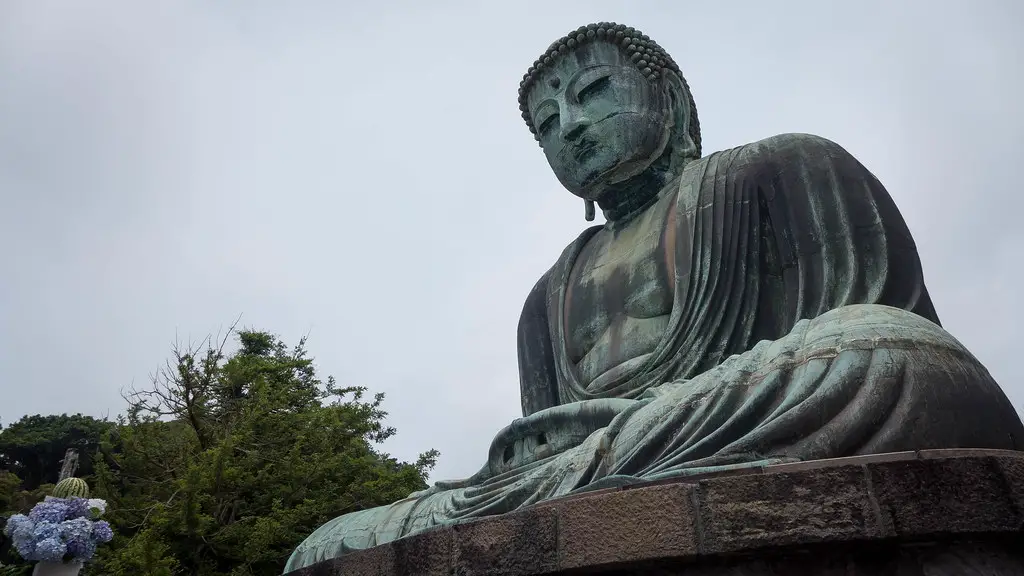
The Kamakura Great Buddha, or Daibutsu, is a massive bronze statue of Amitabha Buddha located in Kamakura, Japan.
What to see or do: You can approach the statue through a lovely wooded area lined with small shops and food stands.
Once you arrive at the base of the statue, you can pay to go inside and climb up to the Buddha’s head for an incredible view.
Don’t miss: Don’t miss the smaller Buddhas located inside the statue. Be sure to bring a few coins to make an offering and say a prayer.
Insider travel tips: – Try to avoid visiting during peak season, as the crowds can be overwhelming.
21. Tokyo National Museum
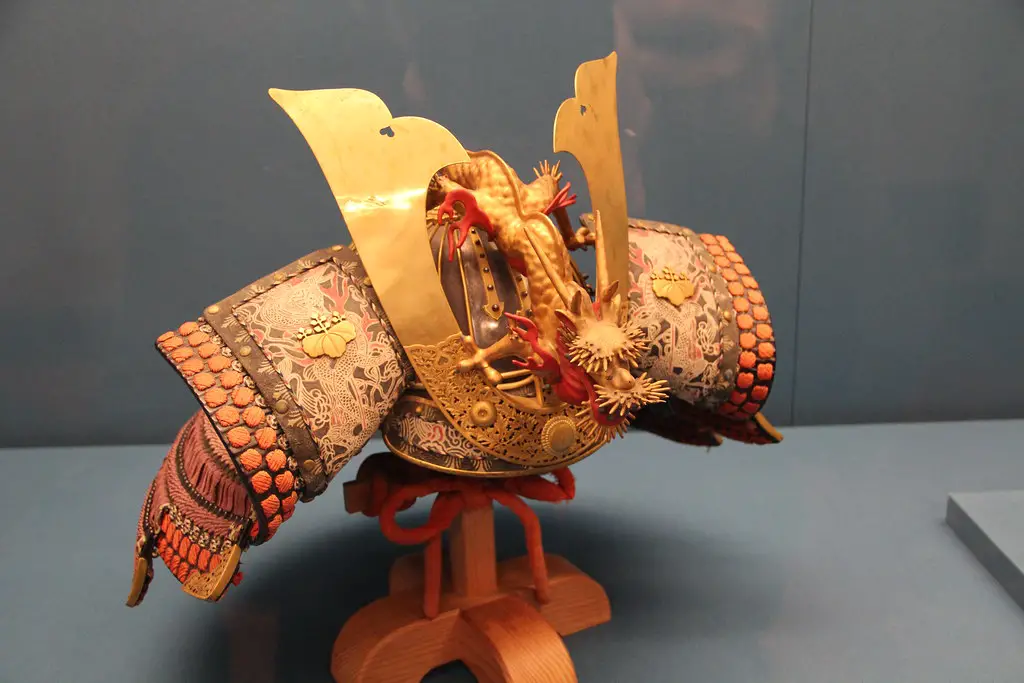
The Tokyo National Museum is one of the largest and oldest museums in Japan, with a vast collection of artifacts and art pieces spanning over thousands of years.
What to see or do: Visitors can explore the museum’s impressive collection of Japanese traditional and modern art, ancient artifacts, ceramics, swords, calligraphy, and more. There are also rotating special exhibitions throughout the year, featuring diverse and intriguing themes.
Don’t miss: The Honkan (Japanese Gallery) is the museum’s main exhibition hall and houses some of the most celebrated and exquisite pieces of Japanese art, including paintings, sculptures, and textiles.
The comprehensive collection highlights various periods, styles, and regions of Japanese art and showcases the country’s rich cultural heritage.
Insider travel tips: To avoid crowds, visit the museum on weekdays or during off-peak hours. Audio guides and English explanation cards are available at the entrance.
There are also several cafes and souvenir shops on-site. The adjacent Ueno Park is a perfect place for a relaxing stroll after your museum visit.
22. Ghibli Museum
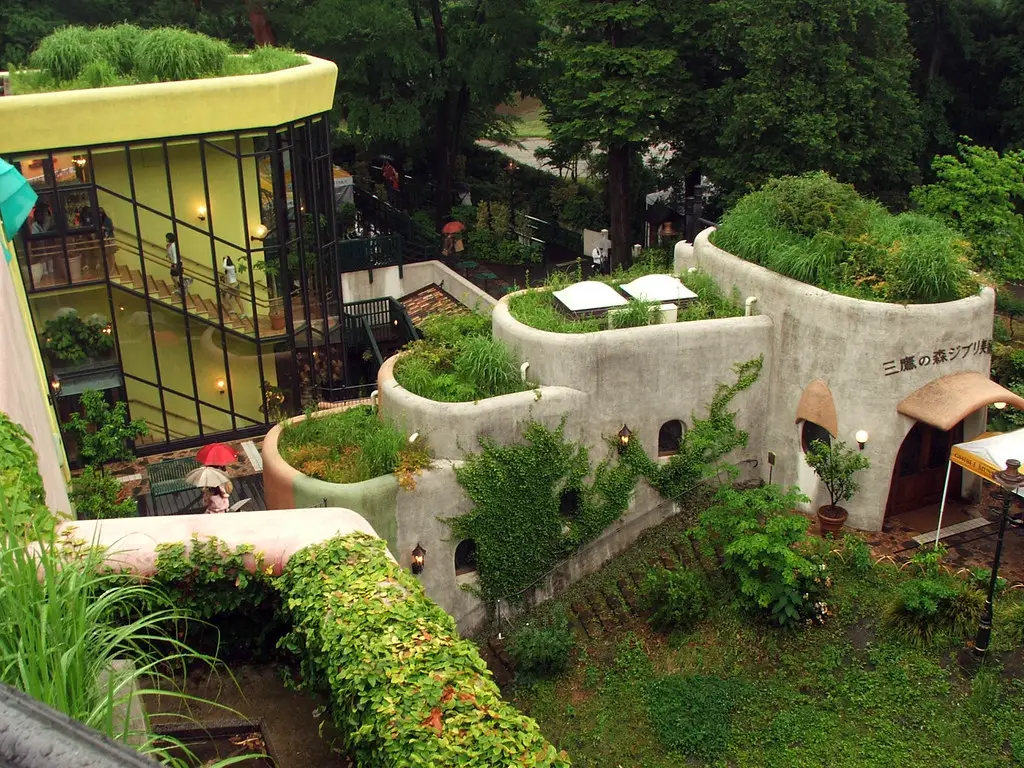
A museum dedicated to the works of the Japanese animation studio, Studio Ghibli.
What to see or do: Explore the museum’s exhibits, which showcase the process of animation and the creativity behind Studio Ghibli’s popular animated films. See exclusive short films made for the museum, including one by the director of Spirited Away, Hayao Miyazaki.
Don’t miss: The Catbus Room, a life-size replica of the bus/cat hybrid from the film My Neighbor Totoro.
Insider travel tips: Make sure to purchase your tickets well in advance as they tend to sell out quickly. Also, note that photography is not allowed inside the museum.
23. Ueno Park

A large public park located in the heart of Tokyo, known for its museums and attractions.
What to see or do: Visit the Tokyo National Museum to see an extensive collection of Japanese art and artifacts, check out the pandas at Ueno Zoo, see the beautiful lotus flowers at Shinobazu Pond, take a walk through the cherry blossom trees during sakura season, and explore the many temples and shrines located within the park.
Don’t miss: The Ueno Toshogu Shrine, which is dedicated to Tokugawa Ieyasu, the founder of the Tokugawa Shogunate. Its vibrant red color and intricate details make it a sight to behold.
Insider travel tips: Visit the park early in the morning to beat the crowds and enjoy a peaceful stroll. Also, pack a picnic and enjoy it under the cherry blossom trees for a quintessential Japanese experience.
If you plan on visiting multiple museums, consider purchasing a combination ticket to save money.
24. Yasukuni Shrine
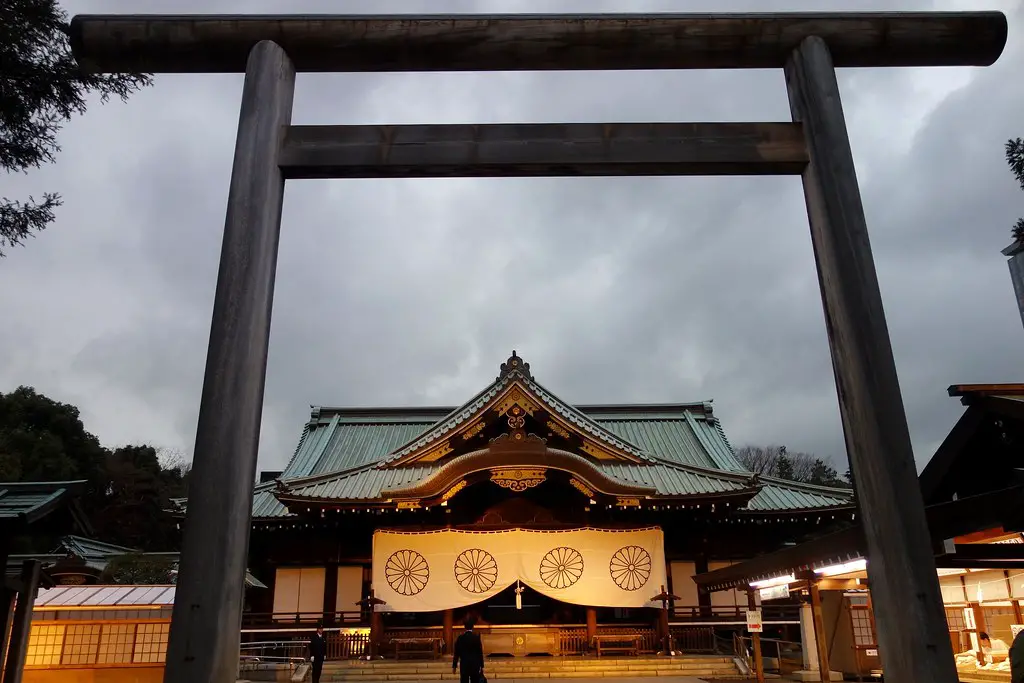
Yasukuni Shrine is a Shinto shrine complex located in Tokyo, Japan.
It was built in 1869 to honor and commemorate the spirits of Japanese soldiers who have died in service to the country.
What to see or do: Visitors can tour the various buildings and monuments throughout the complex, including the main shrine building, museum, and Japanese pagoda.
The shrine also holds various festivals and ceremonies throughout the year and is a popular spot for cherry blossom viewing in the spring.
Don’t miss: The Yushukan Museum, located on the shrine grounds, displays various military artifacts and exhibits related to Japan’s wars and conflicts throughout its history.
Visitors can see items such as warplanes, tanks, firearms, and letters from soldiers.
Insider travel tips: Be aware that the shrine has been a source of controversy due to its enshrinement of war criminals. As such, some people may choose to avoid visiting out of respect for the sensitivities of others.
Additionally, photography is not allowed inside the shrine buildings or museum.
25. Osaka Aquarium Kaiyukan
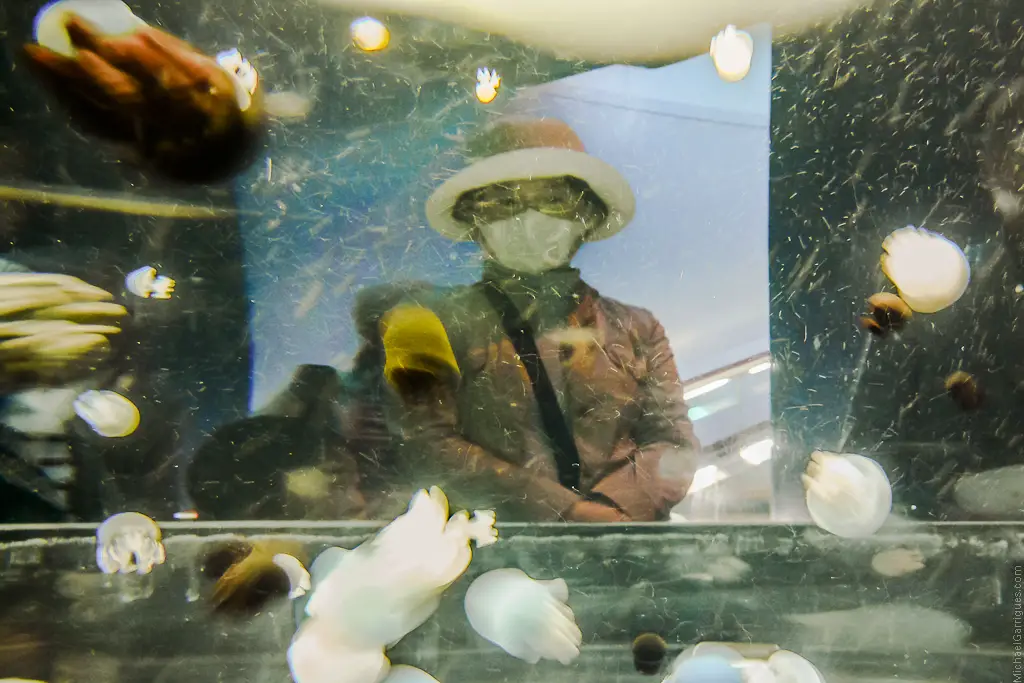
The Osaka Aquarium Kaiyukan is a world-renowned aquarium located in Osaka, Japan.
It features a wide range of marine creatures from the Pacific Rim and is known for its enormous tanks that provide visitors with an up-close glimpse into the underwater world.
What to see or do: Visitors can enjoy a variety of exhibits that showcase the diverse marine life of the Pacific, including giant crabs, penguins, jellyfish, and otters.
The biggest attraction of the aquarium is the central tank which holds over 5,400 cubic meters of water and is home to a variety of sharks, manta rays, and other sea creatures.
Don’t miss: The highlight of the aquarium is the tuna feeding show, which takes place several times a day and gives visitors an opportunity to watch the aquarium staff feed the giant tuna.
Insider travel tips: To avoid the crowds, it’s best to visit the Osaka Aquarium Kaiyukan during the early hours of the day. Also, make sure to take advantage of the audio guides that are available in several languages to enhance your experience.
Finally, if you plan to visit other attractions in Osaka, consider purchasing a combo ticket that includes admission to the aquarium at a discounted rate.
26. Kanazawa Castle

A historical castle located in Kanazawa, Japan, which served as the residence of the powerful Maeda family during the Edo period.
What to see or do: Explore the castle’s many buildings and structures, including the iconic white-and-gold gate, the reconstructed turrets, and the beautiful gardens that surround the castle.
Visit the museum inside the former storehouses to see exhibits showcasing the castle’s history and artifacts.
Don’t miss: The Ishikawa-mon Gate, which was built in 1788 and is the only remaining original gate of the castle.
Take a stroll through the Kenrokuen Garden, located just outside the castle, which is considered one of the most beautiful gardens in Japan.
Insider travel tips: Don’t miss the chance to dress up in traditional samurai or princess attire and take photos inside the castle. Try visiting in the spring to catch the cherry blossoms or in the fall to see the beautiful autumn leaves.
Avoid visiting during Golden Week (late April to early May) or other peak tourist seasons to avoid crowds.
27. Shitennoji Temple

Shitennoji Temple is a Buddhist temple in Osaka, Japan, founded in 593 CE.
What to see or do: – Explore the temple grounds, including the main hall and relics hall.
Don’t miss: – The Treasure House, which displays a collection of important cultural assets.
Insider travel tips: – Consider visiting during one of the temple’s many annual festivals, such as the Shitennoji Taisai in January or the Shoryo-e in August.